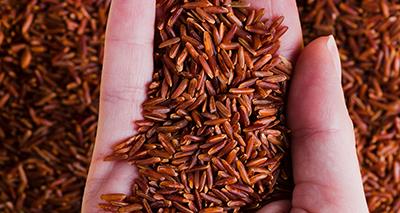Is Red Yeast Rice Right for Your Holistic Health Care? Customizing Cardiovascular Care with Herbal Supplements and Bio Essence Health Science
I. Introduction
Red Yeast Rice (RYR) is not just another dietary supplement; it's a time-honored remedy rooted in traditional Chinese medicine. As herbal supplements become increasingly popular, RYR has garnered attention as a heart health booster and a natural choice for managing cholesterol levels. But is it the best fit in the realm of holistic health care? With the guidance of a dietitian or nutritionist, let's explore if incorporating RYR into your healthcare routine is right for you.
II. Understanding Red Yeast Rice
Red Yeast Rice, a staple in holistic health care, is a distinct fermented product derived from cultivating rice with a specific red yeast named Monascus purpureus. Beyond its striking crimson shade, RYR houses naturally occurring compounds like monacolins. Notably, monacolin K stands out, owing to its molecular similarity to statin drugs, commonly used to combat high cholesterol. This powerful component works by blocking HMG-CoA reductase, an enzyme pivotal for cholesterol production in the liver.
III. Who Should Consider Taking Red Yeast Rice?
In the expanding world of natural remedies and alternative medicine, certain individuals might benefit most from RYR with proper medical guidance:
A. Individuals with Mild to Moderate Hypercholesterolemia
Hypercholesterolemia denotes heightened cholesterol levels in the blood, potentially escalating to cardiovascular complications. A plethora of studies, like the one by D. Heber in 1999, attests to RYR's efficacy in curbing Low-Density Lipoprotein (LDL), the notorious 'bad cholesterol'¹. Nonetheless, those on cholesterol-lowering medications should confer with a nutritionist or dietitian before integrating RYR.
B. People Seeking Natural Alternatives to Statins
For those leaning towards herbal supplements and natural remedies, RYR emerges as a contender. Its monacolin K content mirrors that of statins, proposing an alternative route for cholesterol regulation. However, one must tread carefully; RYR's potency can diverge widely, necessitating oversight for potential drug interactions.
C. Those at Risk of Cardiovascular Disease
Individuals with pre-existing risk factors such as a family history of heart disease or obesity could potentially benefit from RYR. Beyond just cholesterol control, some studies, including one by M. Shen in 2017 suggest that RYR and its pure extract, Xuezhikang (XZK), could improve other cardiovascular health markers like arterial stiffness and exhibit anti-atherosclerotic effects².
D. People with Statin Intolerance
Statin intolerance refers to adverse responses like muscle discomfort stemming from conventional statin drugs. RYR, given its herbal nature and potentially gentler side effects, may offer these individuals a softer touch in cholesterol handling.
IV. Importance of Medical Guidance
Even within the domain of herbal supplements, it's vital to remember that "natural" doesn't equate to risk-free. RYR can potentially clash with other medications, leading to side effects, including liver issues. It's paramount to liaise with a healthcare provider, preferably a dietitian or nutritionist, to determine suitable dosage and monitor its impact on your health.
V. Conclusion
Red Yeast Rice is not a one-size-fits-all solution but holds promise as a supplementary treatment for certain conditions and preferences. It offers an alternative or adjunctive approach to managing cholesterol and enhancing heart health, especially when coupled with a balanced diet and regular exercise. However, the critical takeaway here is the importance of medical guidance. Prioritize your cardiovascular health by consulting medical experts before making RYR a part of your healthcare routine.
In essence, when considering RYR or any herbal supplements, always approach with an informed lens, emphasizing consultations with seasoned healthcare professionals.
D. Heber et al. Arch Intern Med. 1999 Feb;159(4):389-97;
M. Shen et al. Oncotarget. 2017 Oct;8(61):103648-61;
